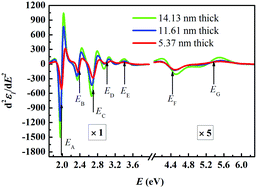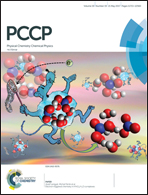Dielectric functions and critical points of crystalline WS2 ultrathin films with tunable thickness
Abstract
Centimeter-scale WS2 ultrathin films were synthesized on sapphire substrates, and they showed highly oriented crystallographic growth along the c axis. Afterwards, the as-grown samples were systematically characterized using various detection methods. Reliable values of the roughness layer thickness and the film thickness were extracted using both atomic force microscopy (AFM) and spectroscopic ellipsometry (SE), and identified using Raman spectroscopy as well. The expansion and tensile strain along the [001] direction were discovered using X-ray diffraction (XRD) measurements. Accurate dielectric functions of WS2 films were derived from the point-by-point fitting results. The critical points (CPs) of WS2, which have not been reported so far, are precisely extracted from the standard critical point (SCP) model. Their origins are uniquely assigned to different interband electronic transitions in the Brillouin zone, including some novel optical structures above 3 eV, which were not investigated in earlier studies. In this work, it is found that dielectric functions are thickness-dependent, while CPs have an opposite nature, and their intrinsic mechanisms are revealed. The as-obtained results can be expected to help people develop more extensive applications of WS2.



 Please wait while we load your content...
Please wait while we load your content...